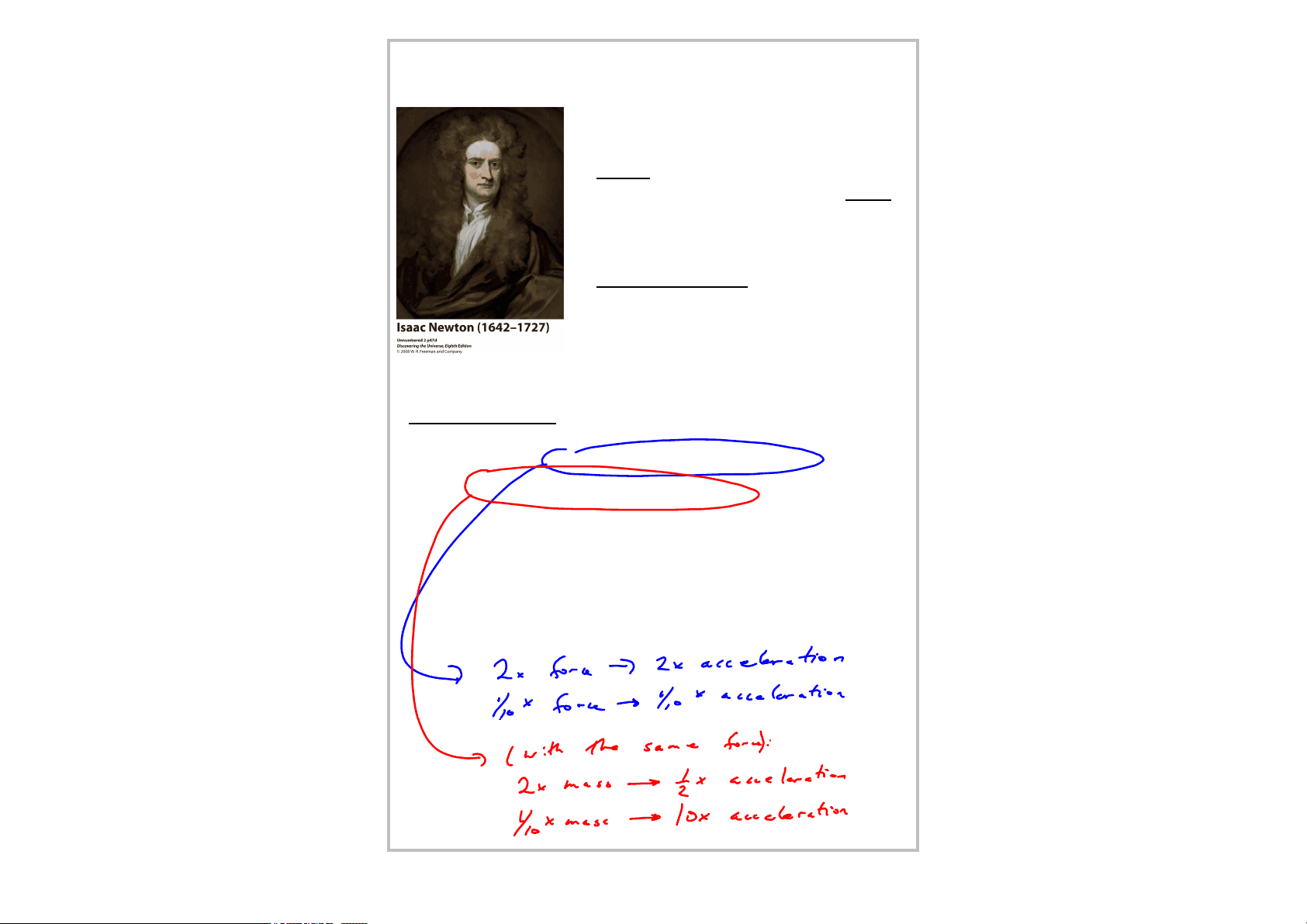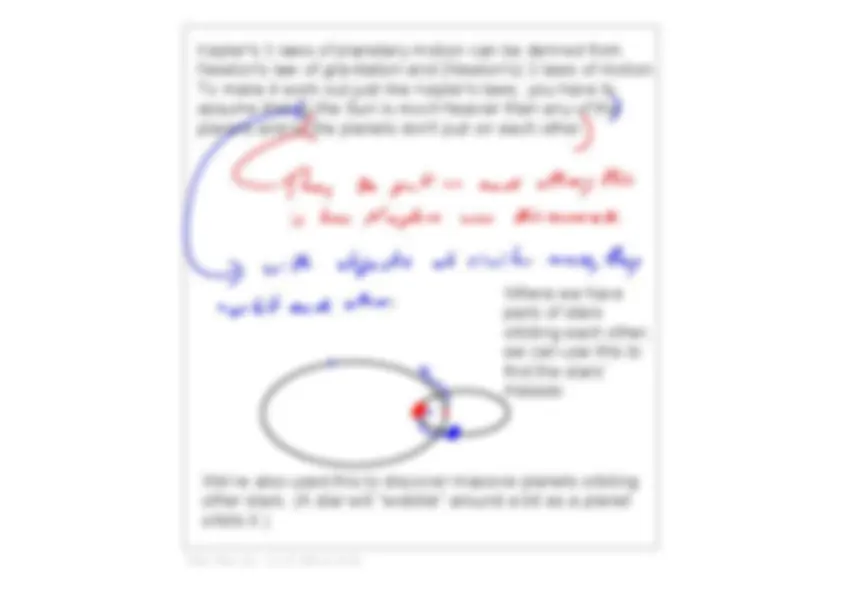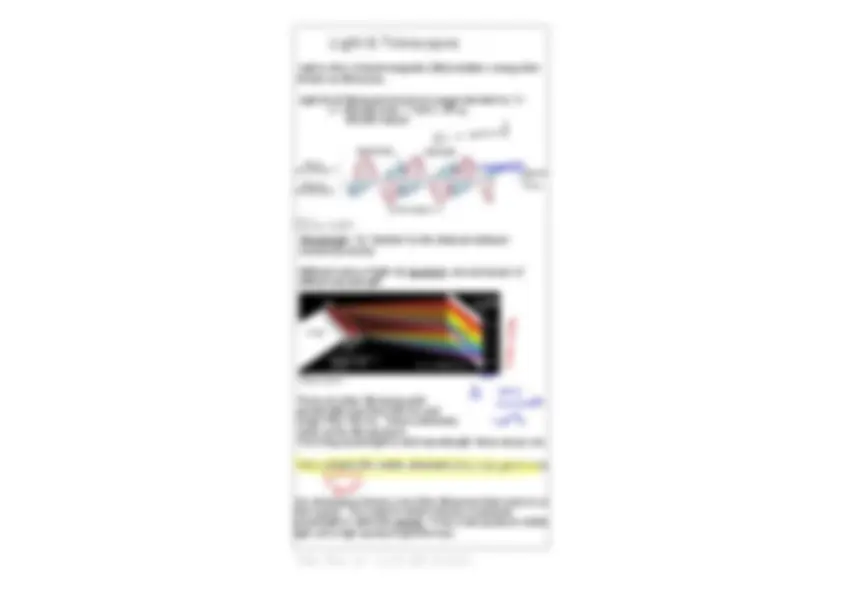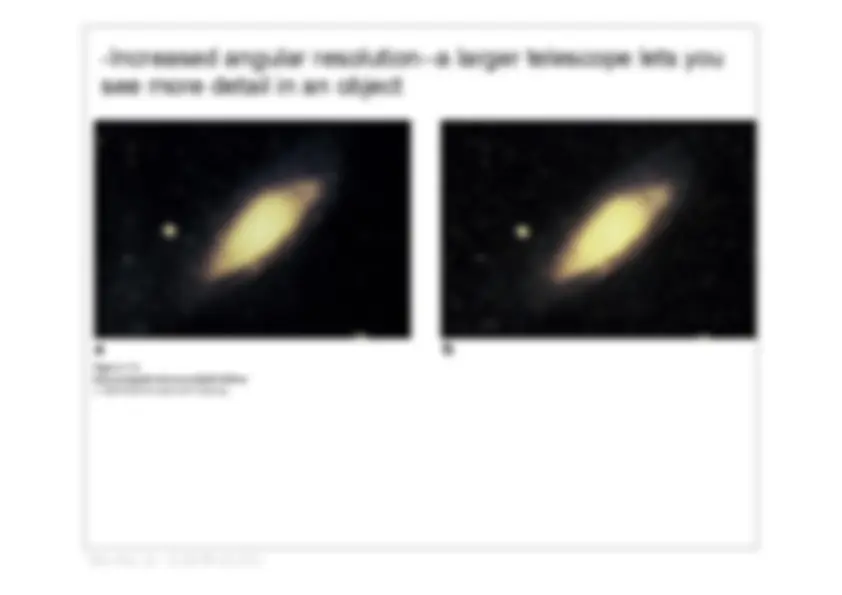







Study with the several resources on Docsity

Earn points by helping other students or get them with a premium plan


Prepare for your exams
Study with the several resources on Docsity

Earn points to download
Earn points by helping other students or get them with a premium plan
Community
Ask the community for help and clear up your study doubts
Discover the best universities in your country according to Docsity users
Free resources
Download our free guides on studying techniques, anxiety management strategies, and thesis advice from Docsity tutors
An explanation of newton's three laws of motion, including the concept of inertia and the relationship between force and acceleration. Additionally, it discusses newton's law of gravity and how it relates to kepler's laws of planetary motion. The document also touches on the concept of light and telescopes.
Typology: Study notes
1 / 9

This page cannot be seen from the preview
Don't miss anything!






Kepler's 3 laws of planetary motion can be derived from
Newton's law of gravitation and (Newton's) 3 laws of motion.
To make it work out just like Kepler's laws, you have to
assume that a) the Sun is much heavier than any of the
planets and b) the planets don't pull on each other.
Where we have
pairs of stars
orbiting each other,
we can use this to
find the stars'
masses
We've also used this to discover massive planets orbiting
other stars. (A star will "wobble" around a bit as a planet
orbits it.)
Light & Telescopes
Light is form of electromagnetic (EM) radiation, energy that travels as EM waves.
Light (& all EM waves) travel at a speed denoted by "c": c = 300,000 km/s = 3.00 x 10 186,000 miles/s
Wavelength ( "lambda") is the distance between successive waves.
Different colors of ligthits spectrumare just waves of different wavelength.
There are other EM waves with wavelengths less than 400 nm and longer than 700 nm. These collectively make up the EM spectrum. From long wavelength to short wavelength, these waves are:
radio, infrared (IR), visible, ultraviolet (UV), xray, gammaray
Our atmosphere blocks a lot of the EM waves that come to us from space. The extent to which it blocks a particular wavelength is called theopacity. It has a low opacity to visible light, but a high opacity to gammarays.
Telescopes: Two main types of telescopes:
reflecting telescopes (reflectors) use a curved mirror to collect & focus light.
refracting telescopes (refractors) use lens to collect & focus light.
Larger telescopes are better. Why? Increased lightcollecting ability. Most of the objects in the sky are dim. We need collect a lot of light to see them well.